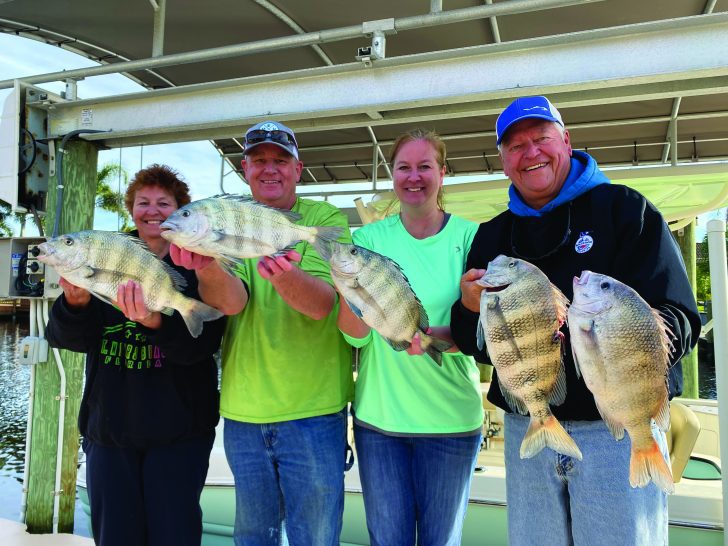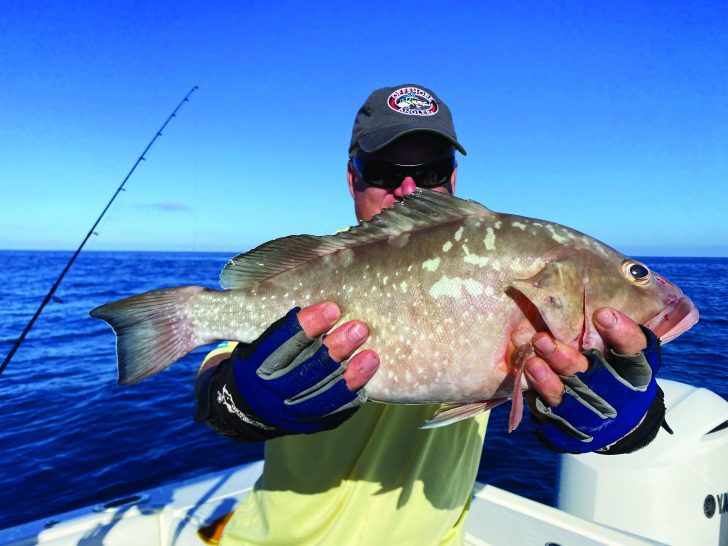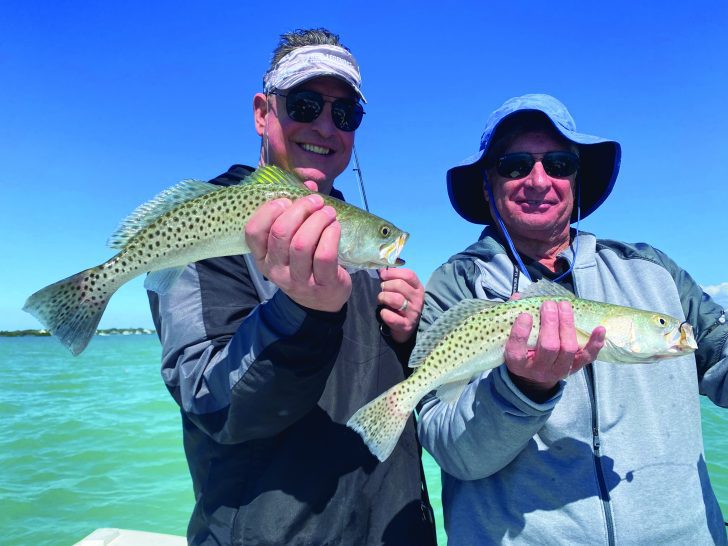Captain Terry Fisher
March is the transitional month (time of year) that I look forward to, confident that I will not be disappointed with productivity from a variety of species, both inshore and offshore. The only thing not to like about March, is the potential of windy conditions, although I am hoping we will get a ‘break’ from the norm since we have been dealing with higher winds than usual during the last several months. Strong north and easterly winds have played havoc on water levels inshore but springtime should bring about higher and stronger tides to level the playing field. Offshore, tide levels are oblivious for the most part and can be overcome by simply locating to depths holding the fish.

The seatrout bite should be good this month with more large ones in the mix. During the winter months, I target them in the grass flats anywhere from 3’-5’ of water. The higher March tides however, may offer opportunities throughout the month to fish deeper holes and areas around the mangrove islands in search of the larger, more skeptical trout. Regardless of when or where one fishes for them, they will bite on artificial presentations, live or cut baits.
The Spanish mackerel migration should be in full swing. They will be found off the beaches, in the passes and inshore. Watch for diving birds and catch them on live or artificial presentations. I utilize a couple of methods:
1) I like to target them in the passes or off the beaches on incoming and outgoing tides. I freeline pilchards on light tackle with heavy monofilament leaders to prevent ‘bite-offs’. Other than for kingfish, I do not like to use wire line with or without ‘stinger’ hooks, although they are very effective. I have a good catch rate and more bites on 40lb. monofilament leaders with 1oz. silver spoons (slow troll or cast) in the passes.
2) In the grass flats while fishing for seatrout one may expect to catch a number of these fish on artificial or live bait presentations. I recommend and use a popping cork on most all occasions when fishing for seatrout in the deeper grassy flats. Spanish mackerel, pompano, ladyfish, Jack Crevalle usually become part of the action.
The redfish action should start to pick-up for anglers as the higher tides will allow access to more areas that hold them. During the winter months we experience low water levels preventing anglers from getting boats to reclusive locations to fish for them. During the winter months, I spend a lot of time working the high side of the tides in and around the passes, under and around docks, with a lot of current. Not as effective as ‘back-country’ locations around the oyster bars and mangrove islands, but it produces from time to time. These fish become by-catches of sheepshead as well. They all hang around the same areas and locations, it is just a matter of when they are there (time of day). I prefer live shrimp, live pilchards, live or cut pinfish.


Offshore locations should produce some nice size Mangrove and Lane Snappers along with grunts for harvesting. These will be accessible for anglers not having vessels for long-range running (10+ miles out). I suggest one looks to 35’-45’ of water with bottom structure such as grass, rubble, etc. medium heavy rods with small circle hooks (1/0-2/0) and light leaders of 15-20lb for best results. Recommended baits are squid, pilchards, silver side minnows and shrimps. Take more chum than beer for best results! Long range offshore locations (35-40 miles) with depths from 85’-110’ should produce some nice red grouper for harvesting. Baits of choice will include squid, cut pinfish, cigar minnows and shrimps. Use 4/0-6/0 circle hooks with a 40lb leader on heavier rods and reels (5000 to 6000 series).
This is Captain Terry Fisher of Fish Face Charters LLC wishing everyone good fishing. Check out my website at www.fishfacecharters.com, Instagram or Facebook for updates. Email me at fishfacecharters@yahoo.com or call me at 239-357-6829 to book a charter. I am available as Captain for Hire on your vessel (by the hour) for navigation, fishing locations and techniques that insure you always catch fish.
